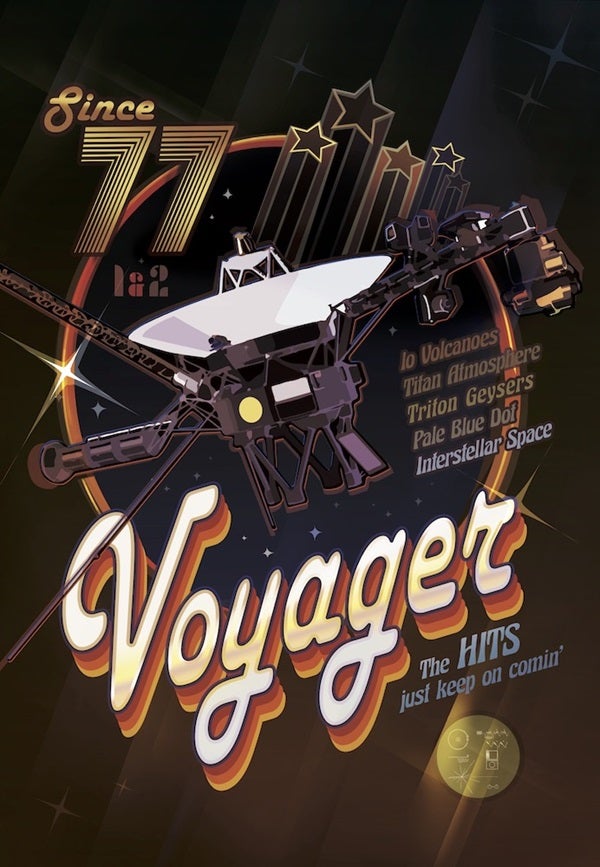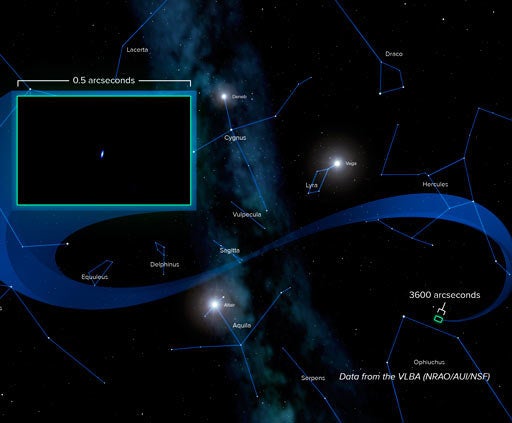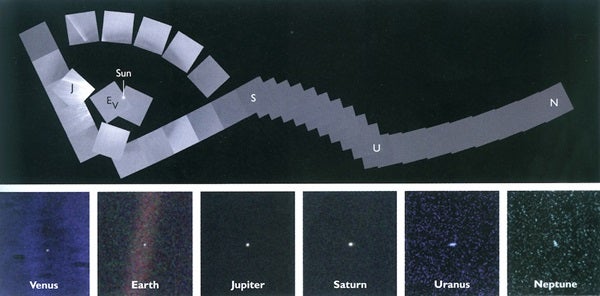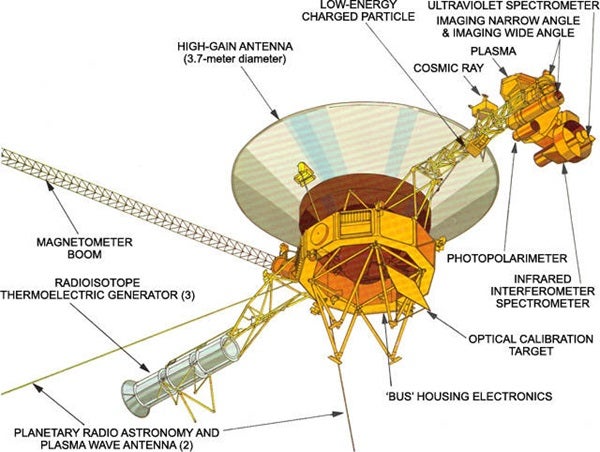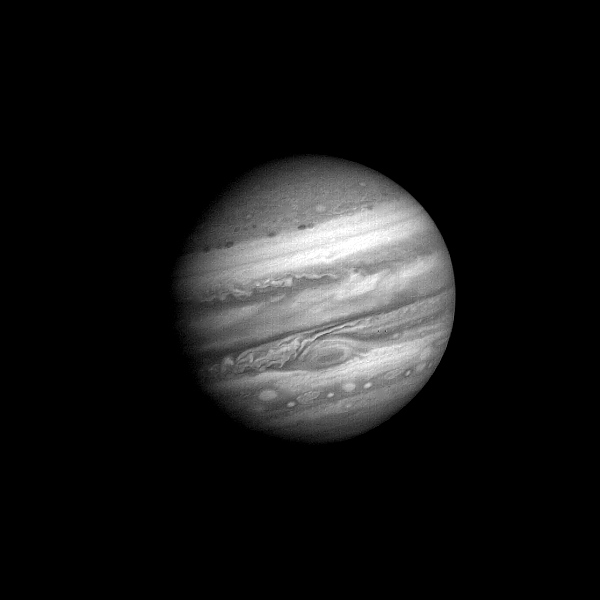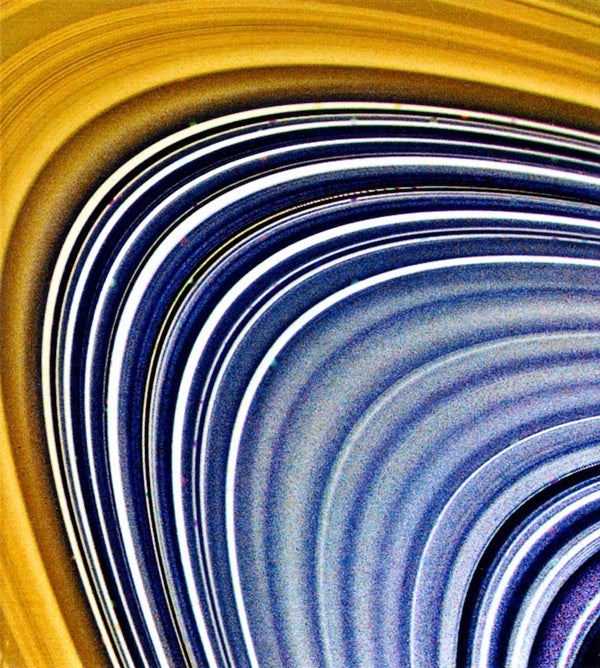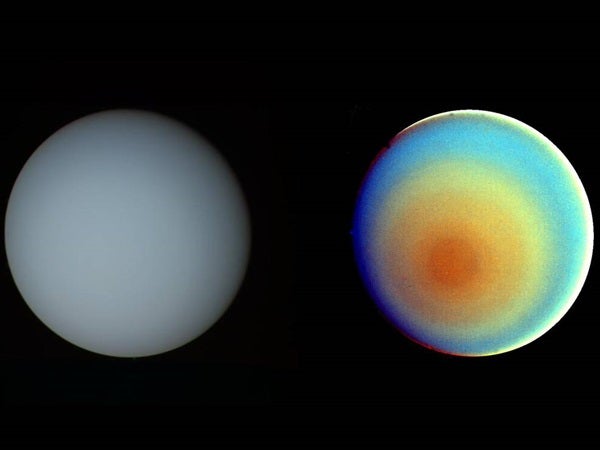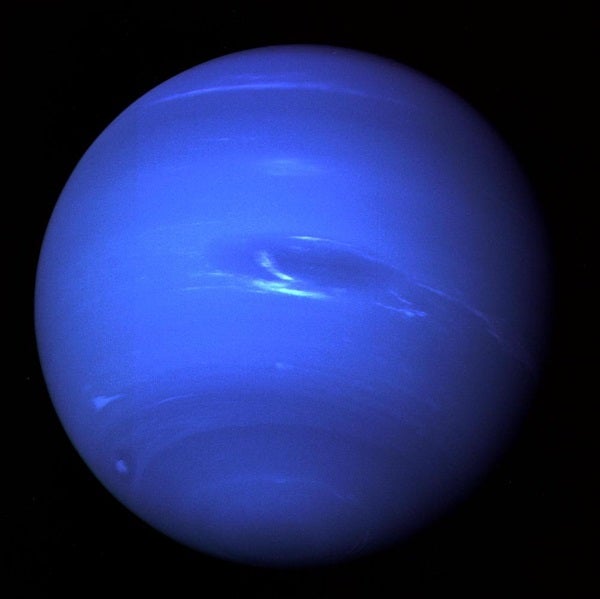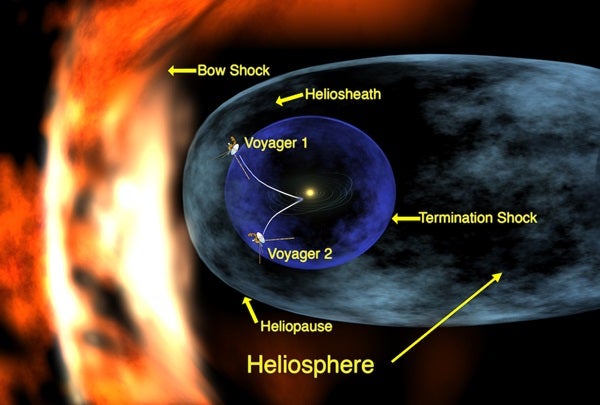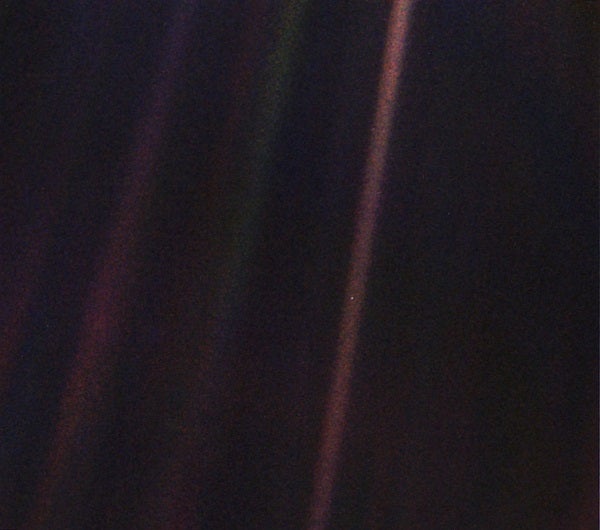Nearly a decade ago, a cluster of radio telescopes spanning a quarter of the globe saw something extraordinary. In February 2013, the Very Long Baseline Array (VLBA) spotted Voyager 1’s faint radio signal, confirming it to be the most distant object built by human hands. At the time, this robotic emissary of Earth was 11.5 billion miles (18.5 billion kilometers) away, and thus far too tiny to be visually resolved.
By tracking its feeble radio signal, the VLBA pinpointed a needle in a celestial haystack. “Just a speck,” mused Voyager Project Manager Suzanne Dodd of the bluish oval smudge in a press conference, “in amongst a sea of darkness.”
It was a returned gaze. Twenty-three years earlier, Voyager 1 had snapped 64 photographs, backdropped by the curtain-like sprawl of the southern constellation Eridanus. Named the ‘family portrait,’ it featured six of the Sun’s planets, including the pale blue dot we call home. “That’s us,” wrote cosmologist Carl Sagan in his book Pale Blue Dot (1994). “On it, everyone you love, everyone you know, everyone you ever heard of, lived out their lives.”
The twin Voyagers left Earth 45 summers ago. Across that bundle of years, they visited mighty Jupiter, ring-bedecked Saturn, gloomy Uranus, and stormy Neptune to lay bare humanity’s naked insignificance. The brutalized moons, ring particles clinging to million-mile racetracks, sulphur-belching volcanoes, ice-spewing geysers, craters straight out of Star Wars, and roiling, Earth-sized tempests the Voyagers saw captivated us with an exquisitely savage beauty.
Fortuitous beginnings
The Voyager mission arose from a happy accident of celestial mechanics. First, Michael Minovich showed that a spacecraft could “steal” velocity from a planet and use it to accelerate away from the Sun. Gary Flandro then applied that logic and showed that probes launched in the late 1970s and ’80s could benefit from a rare geometric line-up of the outer planets, skipping world to world on gravitational arcs. Neptune, at the Solar System’s ragged edge, was suddenly reachable in a dozen years, rather than 30. But if the chance was missed, another wouldn’t arise until the 22nd century.
NASA seized on the opportunity, but shrinking budgets made a grand tour of the outer solar system too expensive. So, the mission was downsized to a quarter-billion-dollar visit to Jupiter and Saturn.
But researchers held out hope for a Uranus and Neptune detour. Theoretically, if Voyager 1 worked at Jupiter and Saturn, Voyager 2’s trajectory could still be tweaked to visit them. With all options open, Voyager 2 launched on Aug. 20, 1977, on a long, slow trek into the unknown. Voyager 1 followed on Sep. 5 on a shorter, quicker route.
Both spacecraft bristled with scientific gear: cameras, infrared and ultraviolet spectrometers, sensors (to map charged particles, cosmic rays, and plasmas), a photopolarimeter, and a magnetometer. Nuclear-powered, the Voyager crafts were expected to survive for five years. But with some luck and power budget managing, they’ve exceeded that goal tenfold.
Overcoming adversity
As enduring as the spacecrafts proved to be, they were not faultless.
Shortly after launching, Voyager 1’s scan platform jammed and Voyager 2 lost its main radio receiver. And those were just the first in a line of glitches that plagued the craft over the years. In 1998, contact with Voyager 2 went dead for 66 heart-stopping hours. And just recently, engineers finally fixed an error with Voyager 1’s aging computer that had first begun earlier this year.
Despite their early struggles, the twin craft swept past Jupiter. Voyager 1 reached the gas giant March 5, 1979 and Voyager 2 arrived July 9, 1979. They discovered dark rings made of tiny rocky grains, whilst time-lapse movies of the famous Great Red Spot unmasked the centuries-old, counter-clockwise-rotating, Earth-sized hurricane. They surveyed Jupiter’s moons, pegging the diameter of Ganymede at some 3,300 miles (5,300 km) as the solar system’s largest natural satellite. Tantalizing hints of water on Europa and volcanism on Io whetted the appetites of scientists and the public alike.
But these tours were, by necessity, only whistlestop in nature and the crafts quickly left the gas giant behind. In November 1980 and August 1981, Voyager 1 then Voyager 2 encountered Saturn. This visit garnered a more accurate measurement of its ‘day’ (at 10 hours 39 minutes) and the discovery of some of the solar system’s nimblest wind speeds, 1,100-mile-per-hour (1,800-km/hr), near the equator. They detected new rings, measured ring-particle sizes from around 0.4 inches to 50 feet (1 centimeter to 15 m) and found tiny ‘shepherd’ moons which kept ring material rigidly in line.
Voyager 1 got a close look at Saturn’s moon Titan when it flew within 2,500 miles (4,000 km) of the world, revealing a thick, nitrogen atmosphere. The missions also captured views of Saturn’s other moons: including peculiar, two-toned Iapetus and icy Enceladus, whose 95-percent albedo makes it the solar system’s brightest moon.
Parting ways
After Saturn, the two spacecraft took divergent paths. While Voyager 1 departed the ecliptic plane, Voyager 2 aimed for two new worlds — a decision made in January 1981 and aided by a course correction at Jupiter. In January 1986, it passed Uranus, a seemingly bland planet with an odd axial tilt of 97.77 degrees.
However, Uranus’ sedate appearance proved misleading. Powerful magnetism, strong aurorae and intense radiation ‘darkened’ its moons, including coal-gray Umbriel, which sports a crater that exhibits a bright ring of material, referred to as the Fluorescent Cheerio. Ten new moons were discovered, but Miranda stole the show, its tortured surface hammered by aeons of meteoroid bombardment and tectonic upheaval.
In August 1989, Voyager 2 flew just under 3,000 miles (4,800 km) over Neptune’s north pole, closer than any of its previous encounters, then swung south to inspect its moon Triton. This revealed the solar system’s coldest-known surface at nearly –400 degrees Fahrenheit (–236 degrees Celsius), with thin clouds and curious geyser-plumes rising to 5 miles (8 km) above the surface.
During its quick visit, Voyager 2 found new moons and rings around the ice giant. And, like its twin, Neptune proved unexpectedly active, its atmosphere punctuated by an Earth-sized storm, the Great Dark Spot, and a fast-moving plume, the ‘scooter’. But Voyager offered few insights into how a world so far from the Sun generates enough energy to power such dynamic weather.
After this final planetary flyby, the twins turned their attention to finding the very edge of the solar system. In December 2004, magnetic data indicated that Voyager 1 had possibly passed the ‘termination shock’, where the solar wind slows from millions of miles per hour to 250,000 miles per hour (400,000 km/h) in response to external pressures from interstellar plasma. Later, the team declared that, at 8.7 billion miles from the Sun, Voyager 1 had entered the heliosheath, the region beyond the termination shock. Voyager 2 entered this region in August 2007.
By August 2012, following an uptick in galactic cosmic ray measurements, Voyager 1 crossed the heliopause, where pressures from the solar wind and interstellar plasma fall into equilibrium. At that point, the probe was about 11 billion miles (18 billion km) from Earth. Voyager 2 followed suit in November 2018.
“We can now answer the question we’ve all been asking,” said Voyager Project Scientist Ed Stone at a press conference called to announce the discovery. “Are we there yet? Yes, we are!”
Forty-five years on, Voyager 1 is 14.6 billion miles (23.5 billion km) and Voyager 2 about 12 billion miles (19.3 billion km) away from home, zipping outbound at over 38,000 miles per hour (61,000 km/hr) and 34,000 miles per hour (55,000 km/hr) respectively. One-way radio traffic extends to just under 22 hours for Voyager 1 and 18 hours for Voyager 2. Power levels are so low that only half of their instruments kept on. Over the years, scientists have been convening to discuss how best to keep the spacecraft running for as long as possible, shutting down systems as needed. The team hopes the pair might remain functional though 2025, but no one knows for sure.
However, long after they inevitably fall silent, they may still pass by other stars hundreds of centuries from now — something NASA planned for well before they even departed Earth. The Voyager spacecraft carry the ‘golden records,’ imprinted with music, voices, and pictures, a poignant reminder of the twins’ long-ago home and its iridescence of life.

